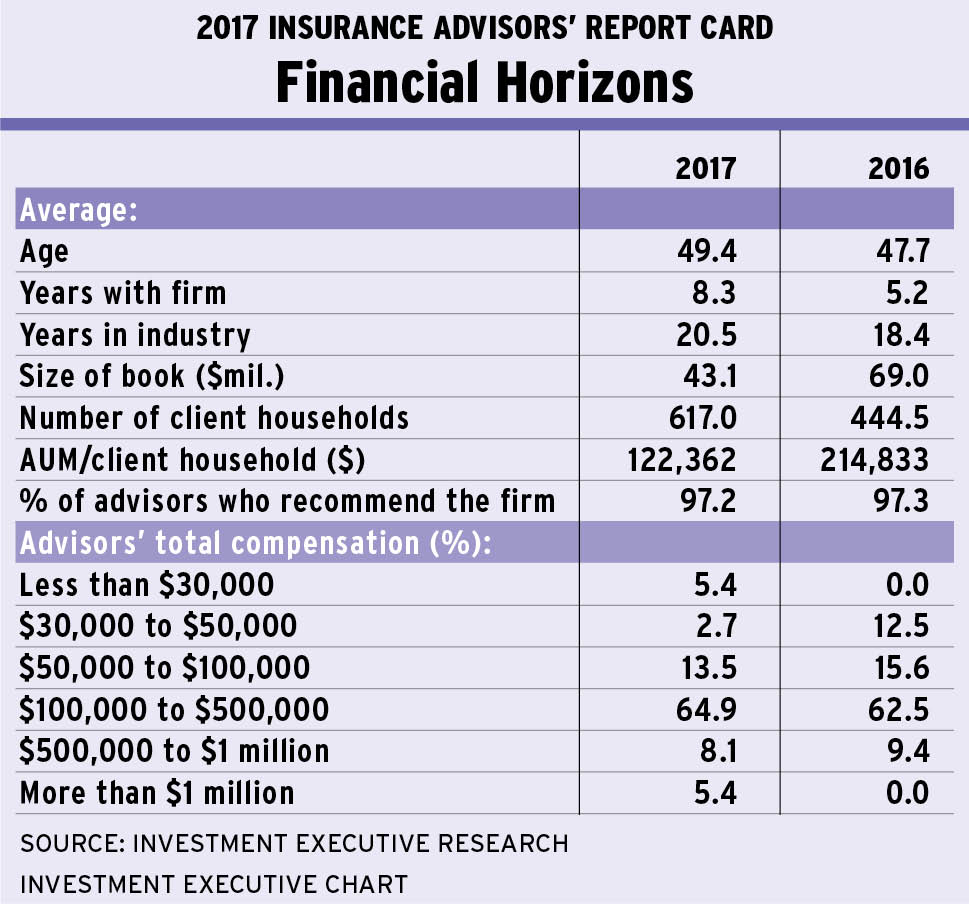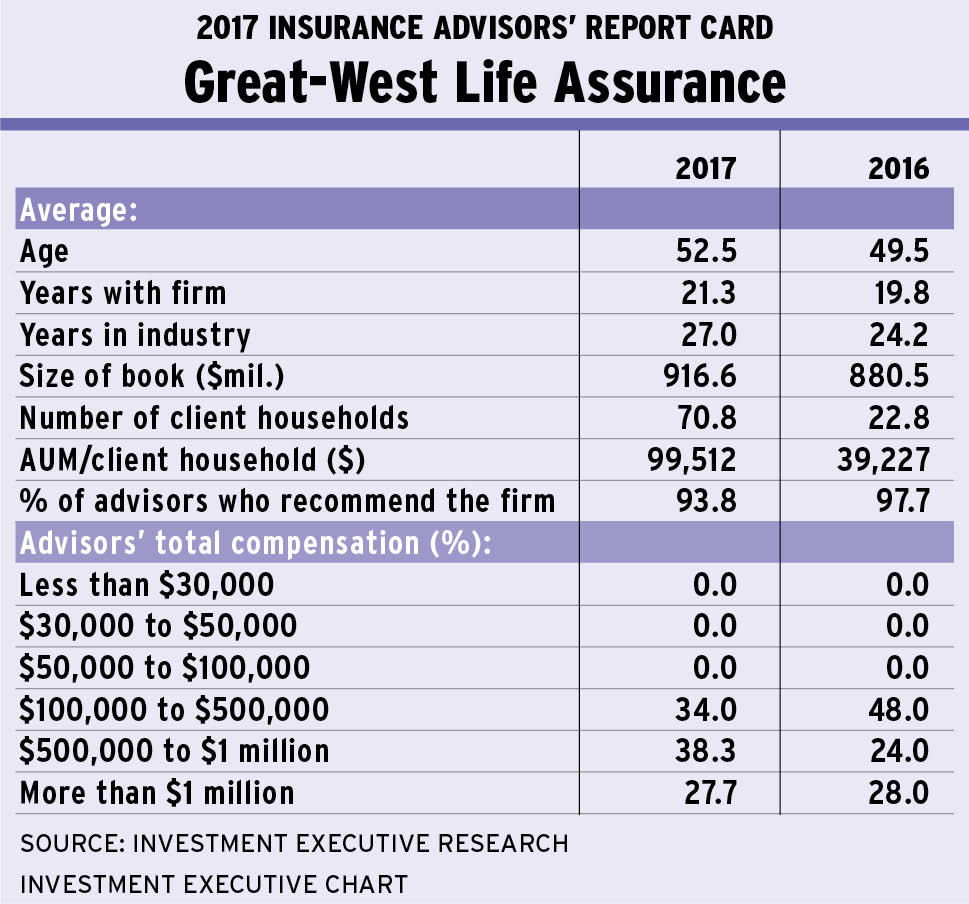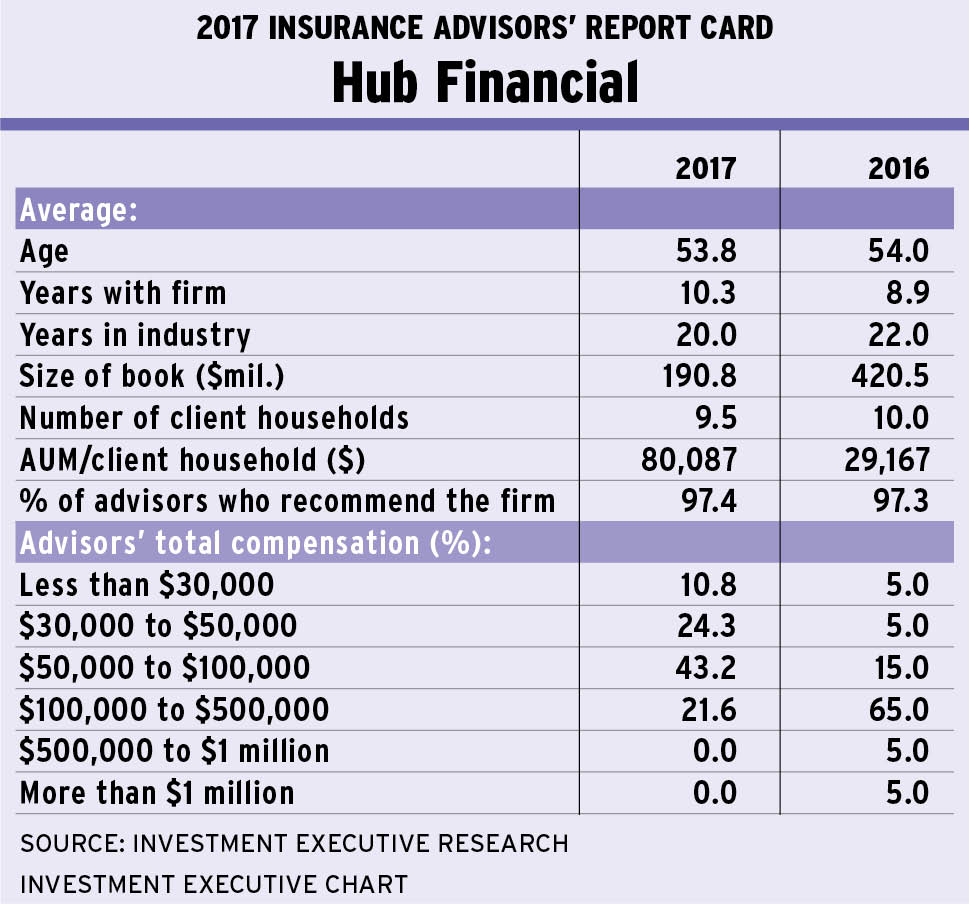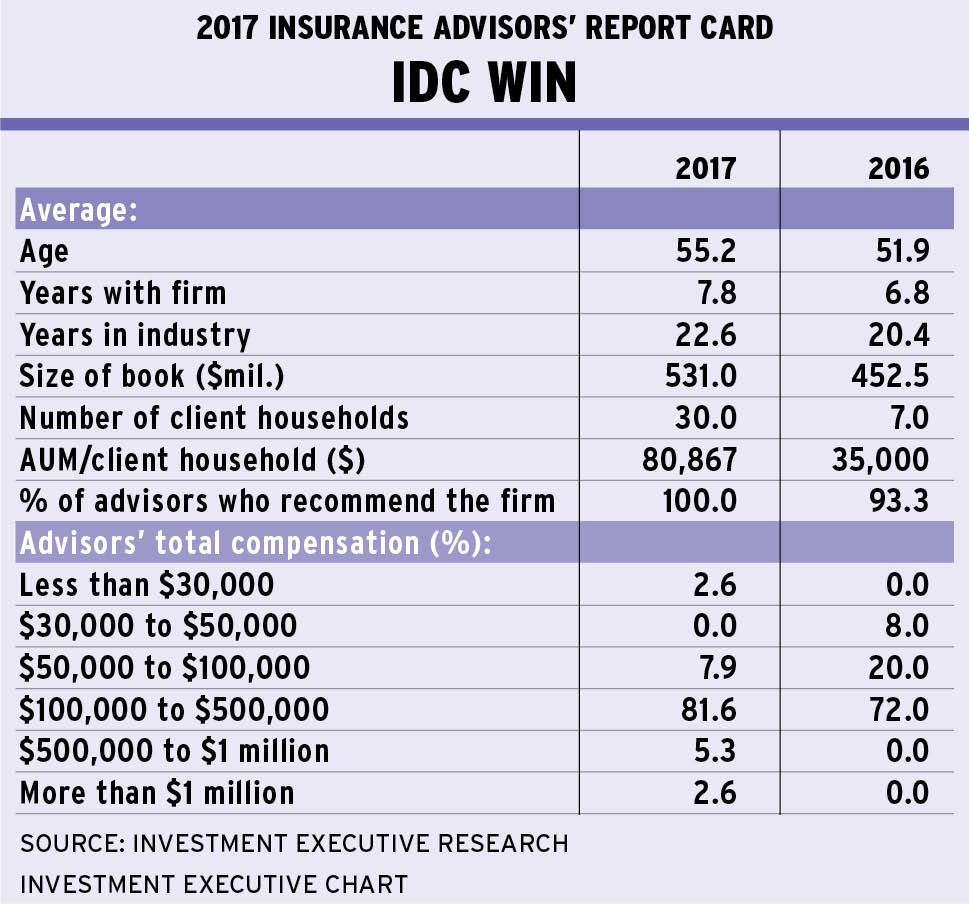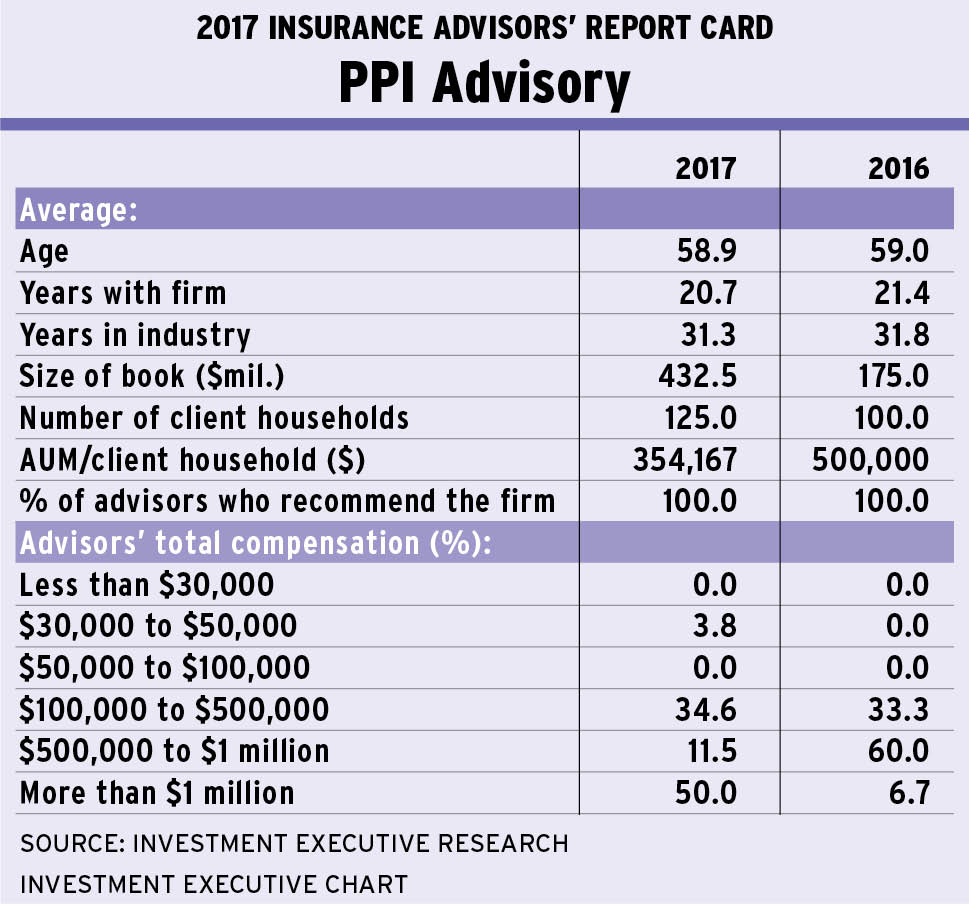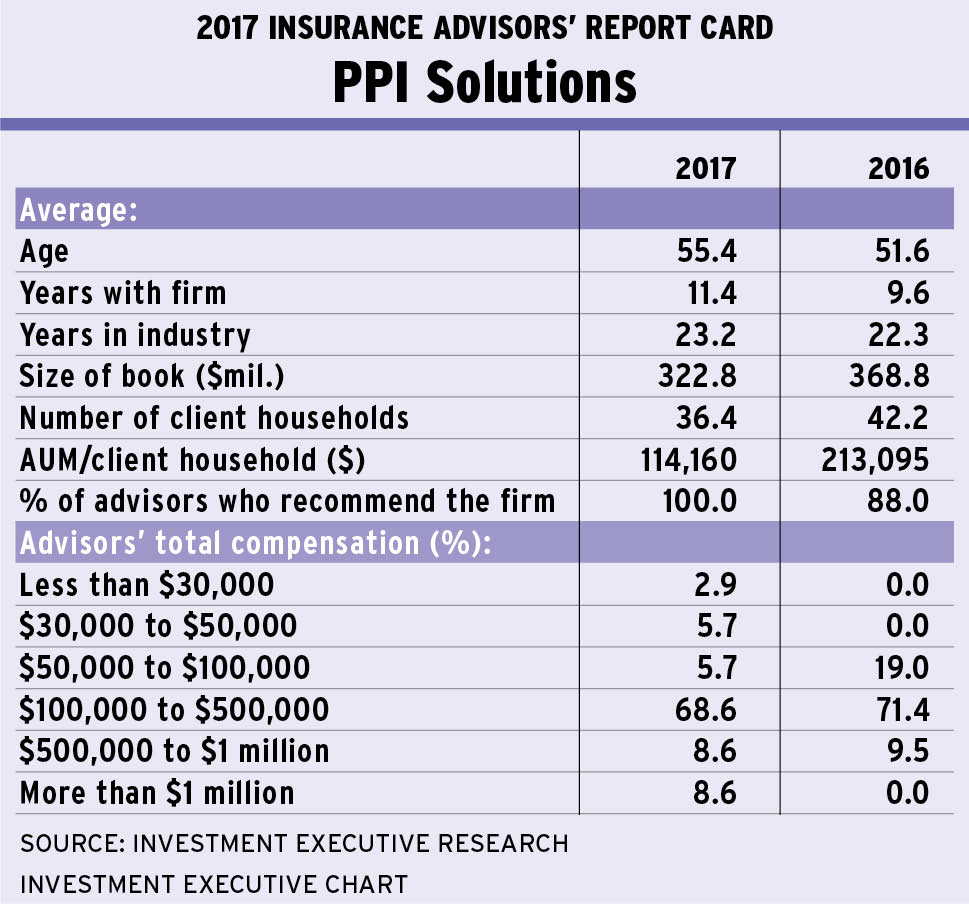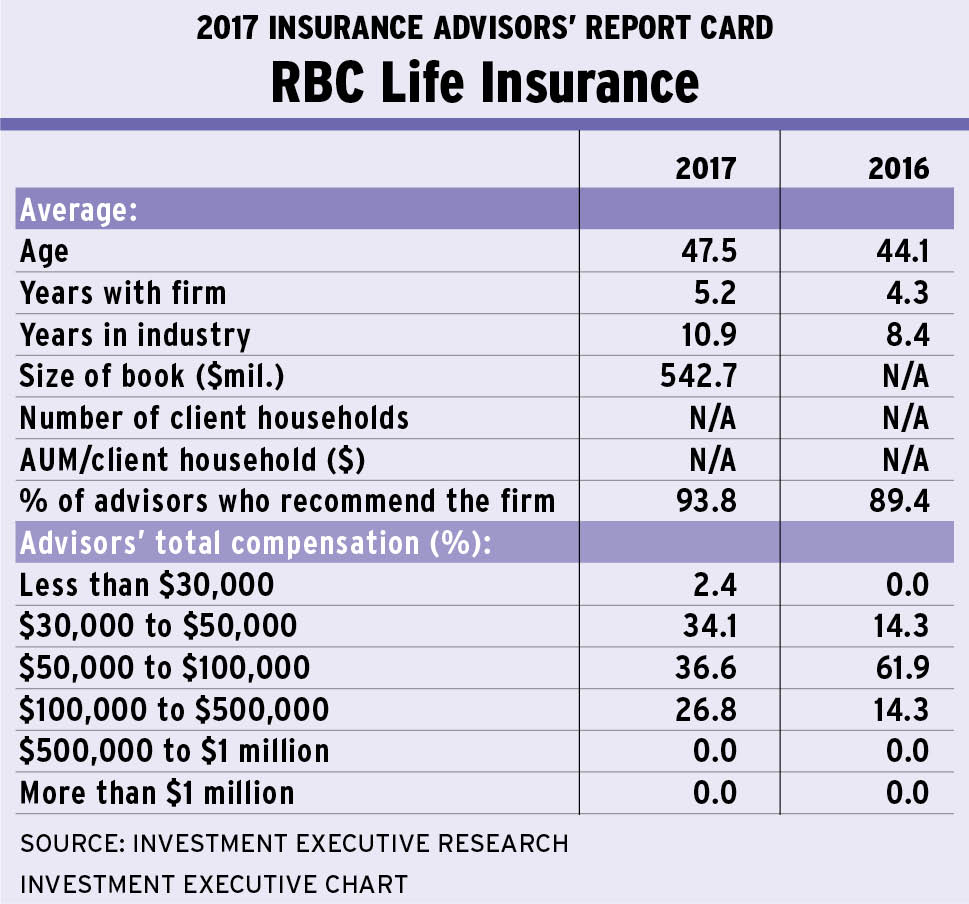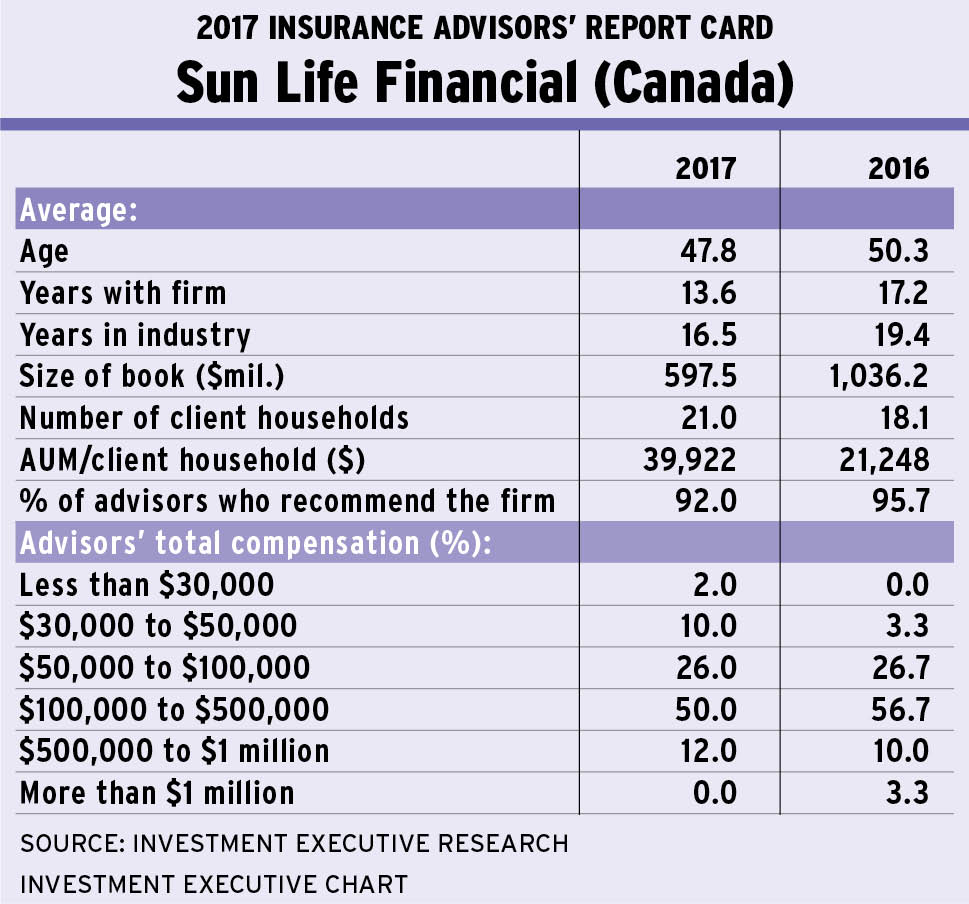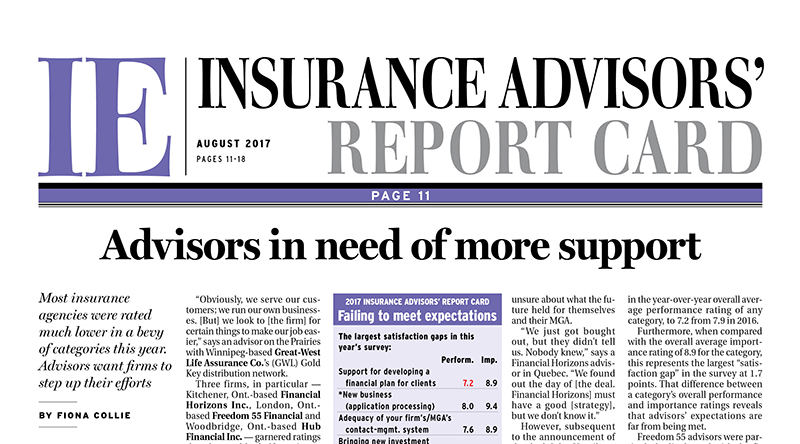
The insurance advisors who participated in Investment Executive‘s 2017 Insurance Adviosrs’ Report Card may or may not have much of an investment book of business, which is in stark contrast to their counterparts in the brokerage, mutual fund and full-service dealer and bank distribution channels. In fact, for some insurance advisors, investments represent a major component of their practices while, for others, investments are almost an afterthought.
The result of this underlying heterogeneity is that the data on this aspect of advisors’ businesses tend to be very volatile — depending on who is captured in Investment Executive‘s (IE) survey sample from year to year. Therefore, it’s important to consider that advisors’ reported investment book values and productivity (as measured in terms of assets under management per client household) should be viewed in this context.
This caution is even more significant when drilling down into the data for individual firms, as response rates and sample sizes ramp up the volatility in these aspects of the survey.
Nevertheless the data are more revealing when it comes to the basic demographic characteristics of the various firms’ sales forces and the distribution of their reported annual compensation.
